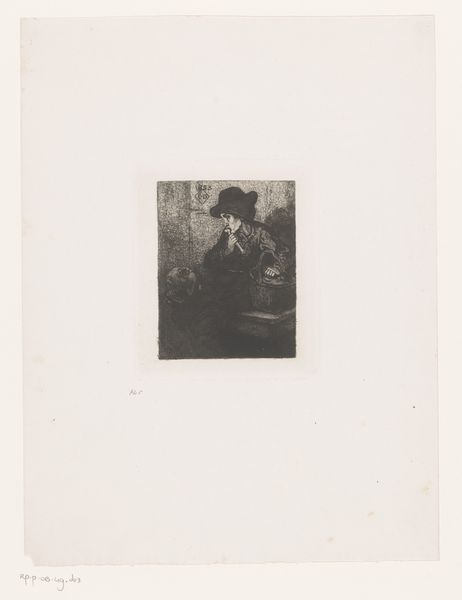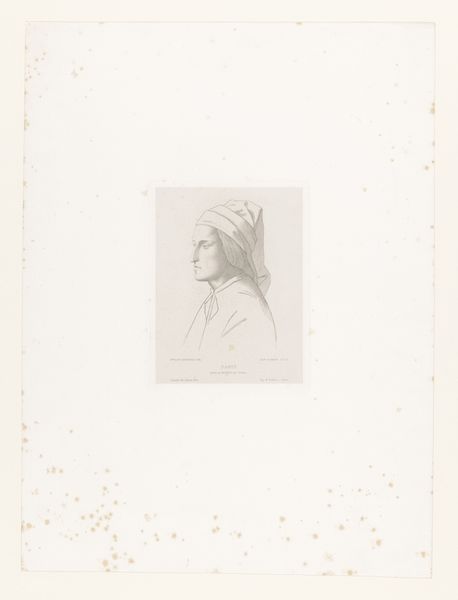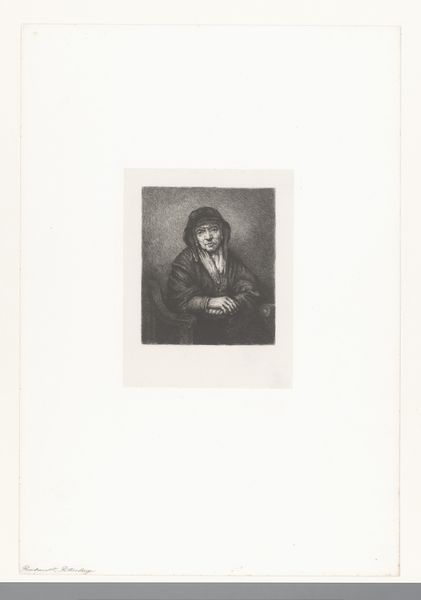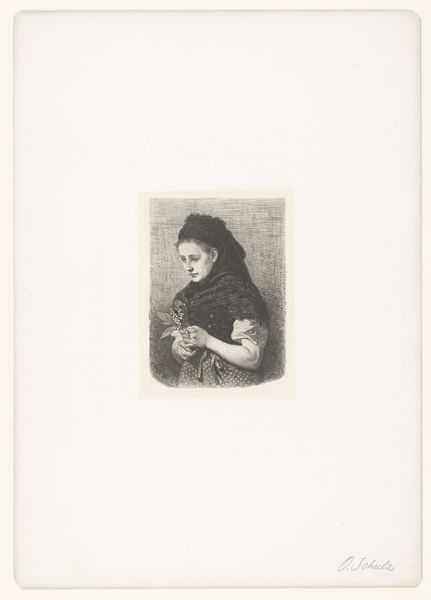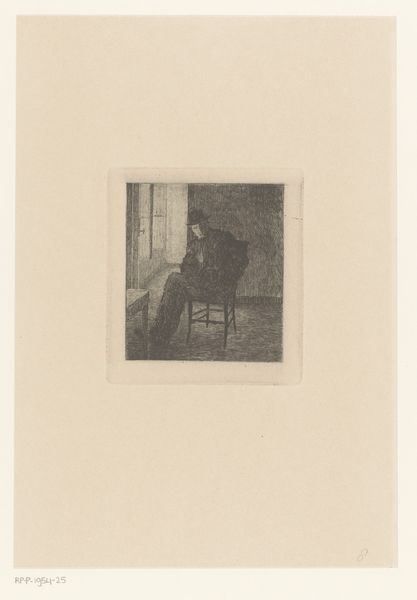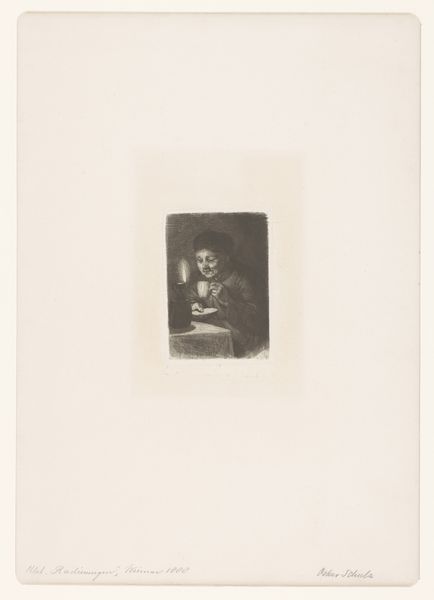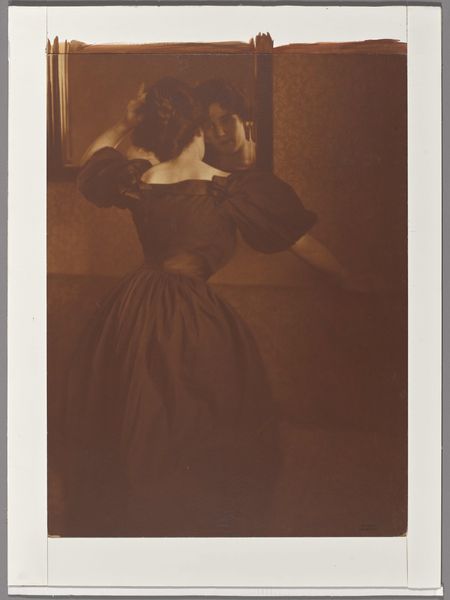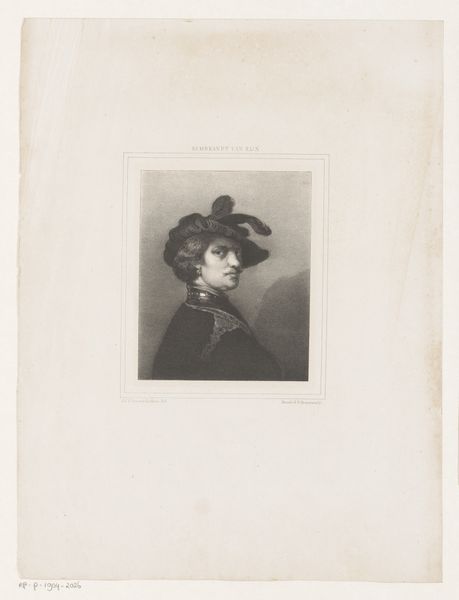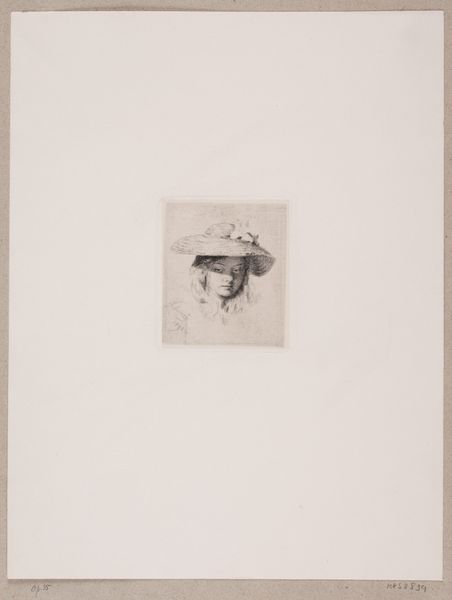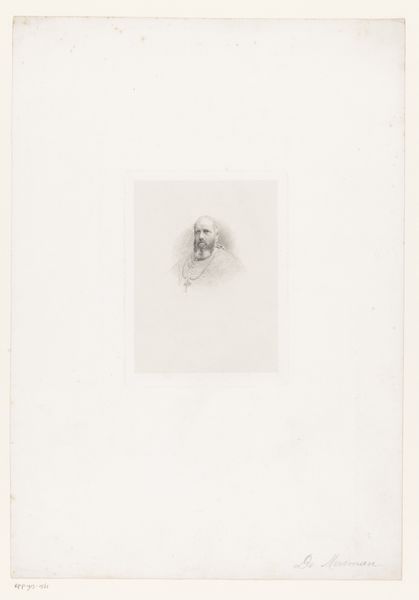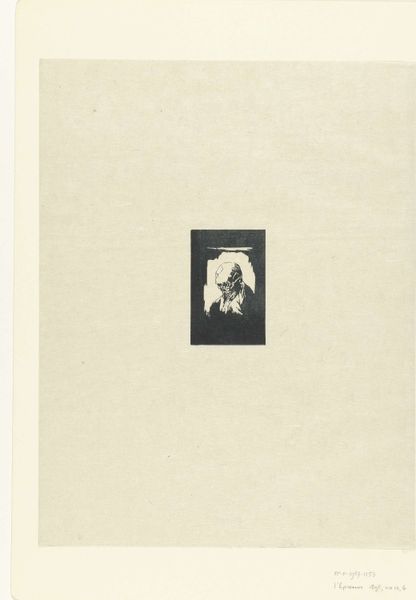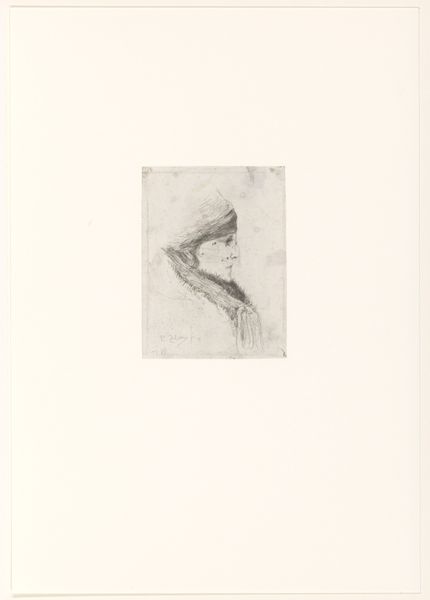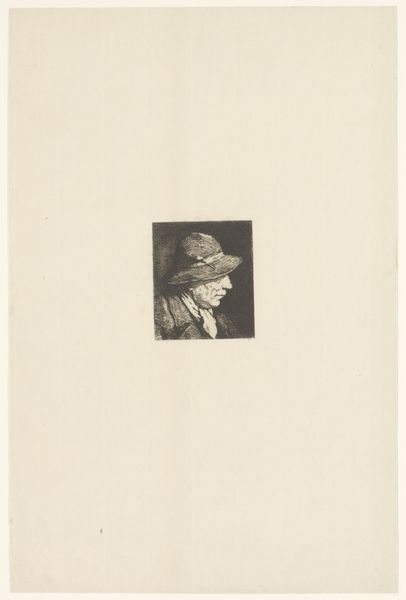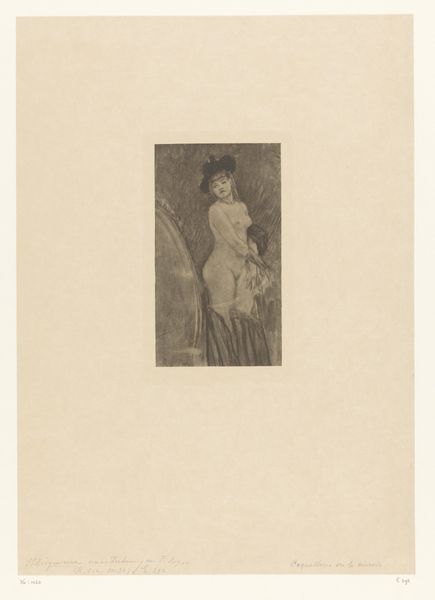
drawing, graphite
#
portrait
#
drawing
#
graphite
#
realism
Dimensions: height 203 mm, width 164 mm
Copyright: Rijks Museum: Open Domain
Nikolay Semyonovich Mosolov created this portrait of an unknown old man with a baret using etching techniques. It's an image that invites reflection on the sitter's life and status, and on the social role of portraiture itself. Made in Russia at the turn of the 20th century, the work reflects the period's interest in representing the common person with dignity. Consider Russia's social structure at this time, with its vast inequalities and growing revolutionary sentiments. The baret, or beret, suggests a working-class identity, a nod to the rising consciousness of the proletariat. Mosolov seems to be asking us to consider the value and humanity inherent in every individual. It is interesting that the sitter is 'unknown'. What might it mean to create a portrait without naming the subject? Is it simply a study of a 'type'? Or is it a comment on the status of the individual within a collective? As art historians, we rely on documents and archives to reconstruct these social contexts. The meaning of art is contingent on its time.
Comments
No comments
Be the first to comment and join the conversation on the ultimate creative platform.
